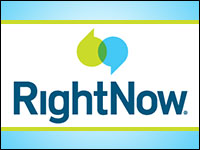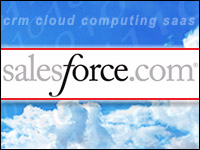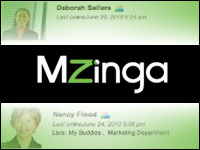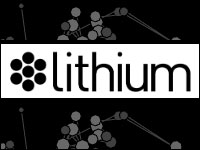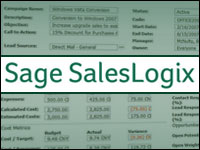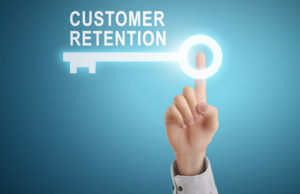
This story was originally published on July 28, 2009, and is brought to you today as part of our Best of ECT News series.
In the past, businesses typically used lists of leads in a type of marketing strategy that Michael Port, author of Book Yourself Solid, refers to as “interruption marketing.” The goal was to get in front of a potential customer, book an appointment, and sell the product.
However, that model is changing into “permission marketing,” Port said, a term coined by Seth Godin in his book of the same name. This change has impacted the way businesses should employ lead generation. [*Correction – July 29, 2009]
Businesses now operate in the age of information, customization, and independence, Port told CRM Buyer. Consumers are highly informed, know what they want, and do not appreciate being swamped with irrelevant information or sales pitches.
“Being labeled a ‘spammer’ is like being called a ‘pedophile.’ It’s very distasteful,” Port warned. He sees many opportunities for potential clients in the changing model.
However, sales offers should be proportionate to the amount of trust built between the business and the customer, Port cautioned.
In fact, he questions whether service-based businesses that rely on customer relationships should buy leads at all.
The Good List
The solution to the problem — and key to successful lead generation — is using qualified, high-quality leads, said David LaBonte, president of AdMatrix.
“Quality leads are far superior to getting just quantity of leads,” LaBonte advised CRM Buyer.
Although having a large number of leads is attractive to some people, LaBonte reminds businesses that all those leads need to be followed up on and turned into prospects. This is particularly inefficient if a list has not been qualified first.
AdMatrix offers a program, Marketing Matrix, designed to ensure that potential clients opt in to receive communications by phone, email or snail mail. Marketing Matrix combines focused and personalized direct mail, email, Web pages and professional sales calls, Leilani Smith, director of business development for AdMatrix, told CRM Buyer.
Once that process is completed, the list is considered qualified — that is, the leads have already expressed interest in receiving information.
“Now we have a really good list,” LaBonte explained.
If a lead has not been qualified, a potential client will wonder why the contact is occurring or could even find the contact threatening, observed Jay Weintraub, founder of LeadsCon.
“A qualified lead will at least fit the right client profile and have an interest in hearing from you,” he told CRM Buyer.
What’s a Lead Worth?
When investing in any lead generation service, Weintraub advises businesses to research the service provider and ensure that it will negotiate a policy dealing with the handling of bad leads ahead of time. Businesses should understand how the service generates leads and ensure that the information is in the contract so they have legal recourse if anything goes wrong.
When evaluating a lead generation service, Weintraub said businesses should consider how much they are willing to pay based on the percentage of a potential sale.
“That will determine how much per lead you can afford to pay,” he explained. “Let’s assume each sale is worth (US)$1,000. How much will you pay for that $1,000? Is it $200? It needs to be realistic.”
Most people, Weintraub said, are surprised at just how much they do pay. “On the whole, we see companies paying between 10 percent and 30 percent of the expected revenue towards the cost of marketing. So, in this case, if it’s 20 percent, that means $200 per sale.”
Business should consider the cost per qualified lead and cost per sale, LaBonte recommended. A good service should be able to provide the cost per qualified lead. It is not enough to consider the cost of leads — the key is to look for cost per qualified lead.
“Those are the two really important numbers to track,” LaBonte stated.
The Right Message
Business-to-business companies may benefit from buying a list of potential customer leads, author Port acknowledged, but he advocated using a no-cost, barrier-free, no-risk first contact method to attractpotential customers. Businesses need to add significant, relevant value for customers, he said.
“More companies are recognizing this is the key,” Port said. For example, he suggested holding interesting, relevant, educational events on a frequent basis for potential clients. This approach creates a low-risk first contact for both parties, creating a situation where the customer gets the better deal.
“Your customers should always feel like they’re winning more,” he said.
Businesses need to send out the right message to potential customers. LaBonte added. Businesses should not send out any communication that did not contain value for the customer, he warned.
“What is their shiny object?” he asked. “People don’t mind receiving information if it’s valuable. It needs to have their shiny object attached to it.”
Use leads from people who have already expressed an interest in the type of service or product being offered, preferably very recently, LeadsCon’s Weintraub recommended.
“One area that I remain bullish on is that of real-time lead generation along with customer choice. So long as the lead is from someone who has expressed an interest and knows they will be contacted, it is among the most effective methods of customer acquisition for both companies and users,” Weintraub said.
Relevant Messaging
LaBonte’s company maintains a database that includes as much information about a customer’s company as possible and then communicates with them based on that information. The message created is unique to the individual customer.
“We’ll send them a proactive communication,” LaBonte said.
“Our system is focused on getting the right message to the right people,” said AdMatrix’s Smith. “So the message is extremely relevant on a personal level. Interested respondents are referred to a customized Web page, or PURL, so we can immediately identify them, qualify them and track their interests.”
A PURL is a personalized URL that tailors the Web page to the customer, LaBonte explained. It reiterates helpful information, qualifies them further by asking them questions, and tracks their visit and answers.
“The customers have leads that are very qualified to follow up on,” LaBonte said.
*ECT News Network editor’s note – July 29, 2009: Our original version of this article stated that Michael Port, author of Book Yourself Solid, said the “interruption marketing” model was changing into what he called “permission marketing.” Port’s attribution of the “permission marketing” term to Seth Godin, author of the book by the same name, was inadvertently left out.



